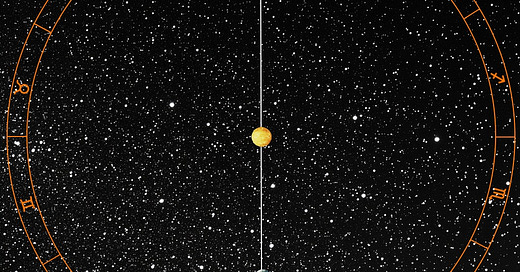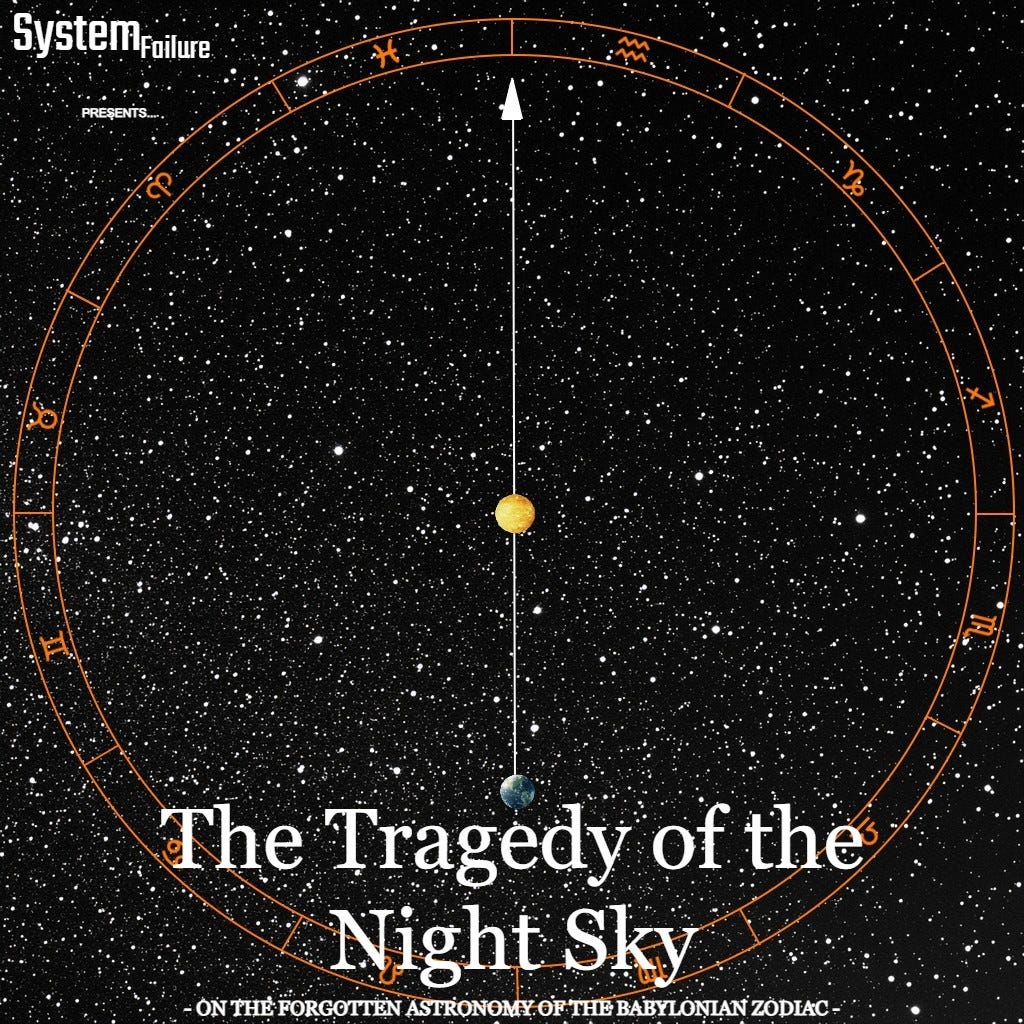Death and rebirth are central themes of Christianity, both in its mythology—the story of Jesus is about coming back from the dead—and in its actual history. Christianity resurrected dead and dying older traditions and carried them forward into the Middle Ages and beyond.
Three major examples—all readily allegorized by death and rebirth—are debt forgiveness, astronomical cycles, and ego death. These are the three main layers of Christian source material.
Daily and annual astronomical cycles cause alternating day and night and the rhythms of the agricultural growing seasons. Because early Neolithic farmers so obviously owed their lives to the sun's comings and goings, they understandably worshipped it as their daily and annual savior.
Symbols of sun worship were incorporated into Christianity because they were broadly recognizable to the pagan world into which Christianity was born. The Babylonian and Egyptian religions were both based on astronomy, and early Christians borrowed heavily from them. That’s how astronomical cycles shaped Christianity as we recognize it today.
The Night Sky
In today’s era of smartphones and cheap flat-panel TVs, it's easy to forget that the night sky was once the greatest show on earth. Before electric lights drowned out the heavens, people paid close attention to the celestial comings and goings in the night sky.
When they appeared, comets used to terrify entire populaces. Since other animals ignore the night sky, we used to assume that unfamiliar celestial objects must have been hung there by the gods to warn humanity of some looming disaster.
Coincidences cemented this notion in the popular mind. A prime example is the comet that appeared in the skies over Rome in 44 BC, the year of Julius Caesar’s assassination. It wasn’t until 1758 that Sir Edmund Halley rescued humanity from dread by predicting the return of the comet that still bears his name. Halley had already been dead for 20 years by the time his comet reappeared, proving that it was governed by the ordinary laws of physics and was not some kind of warning from the gods.
Since then, the advent of electric lights and highly compelling screens have utterly divorced us from Allen Ginsberg’s “starry dynamo in the machinery of night”. Some 83% of the U.S. population lives in urban or suburban environments, where light pollution cuts us off from the night sky.
The stars used to provide us with a nightly dose of awe and humility, bringing us into regular contact with the profound mystery at the core of the human experience. However, modern people have lost the ability even to orient themselves in the celestial sphere, and that’s a tragedy.
The Great Year
No amount of light pollution could prevent us from observing the sun's daily cycle, in which it rises each morning and sets each evening. Most places on Earth cannot ignore the annual cycle, either, in which the Earth revolves once around the sun each year. But there is a third astronomical cycle. And because it takes 25,800 regular years to complete, most modern people have no idea that the astronomical Great Year exists.
The sun appears to confine itself to a narrow road in Earth’s sky. One edge of this road is defined by the sun's path on the shortest day of the year, and the other edge is determined by the sun's path on the longest day of the year. During the spring and fall equinoxes, the sun travels right down the center of this imaginary road in our sky. At no point during the year does the sun wander off the road. From our vantage point, the sun appears to move along the road in the foreground, while the unmoving stars in the background allow us to mark its progress.
Annually—at sunrise on the first day of spring each year—ancient astronomers carefully noted the stars behind the sun as it rose. They discovered that the sun doesn’t make it all the way back to its initial position each year, with respect to the stars behind it. The ancients had no idea that this slippage was due to the fact that the Earth wobbles on its axis as it rotates. But they could still calculate that, after 25,800 years, the sun would slip all the way back into its original position along its road. That is the Great Year.
The Zodiac
The Babylonians worshipped Shamash, a solar deity who rode across the sky in a chariot. Shamash was believed to illuminate truth and dispense justice; the Code of Hammurabi invokes him as the divine source of law.
To mark Shamash’s path along his road in the sky, the Babylonians invented the Zodiac. From Earth's surface, this path appears like a giant 360° road in the sky. The Babylonians divided this road into 12 equal segments of 30° degrees each and assigned each segment a theme based on the constellation of stars in it:
GU (Great One, associated with Aquarius)
SIM.MAH (Fishes, later Pisces)
HUN (The Ram, later Aries)
GU.AN.NA (Heavenly Bull, Taurus)
MASH.TAB.BA (Twins)
DUB (Crab or Tortoise, Cancer)
UR.GULA (Great Lion, Leo)
AB.SIN (Seed-Furrow, Virgo)
ZI.BA.AN.NA (Scales of Balance, Libra)
GIR.TAB (Scorpion, Scorpio)
PA.BIL.SAG (Sagittarius, Archer-like deity)
SUHUR.MASH (Goat-Fish, later Capricorn)
Whichever of these constellations the sun appears to rise in front of on the first day of spring is the current “Astrological Age”. Sunrise lingers on each Zodiac sign for approximately 2,000 years; it’s currently somewhere between the constellations of Pisces and Aquarius. That’s why the 1967 hit musical Hair refers to the dawning of the “Age of Aquarius”.
Because constellations are highly irregular, there’s no definite line where one constellation ends and the next one begins. To account for this uncertainty, the Babylonians placed a 3° neutral zone between signs. Because we currently sit in such a neutral zone, there is a debate about whether we’ve passed into the Age of Aquarius yet. All this makes the numbers 30 and 33, along with the number 12, highly significant in Babylonian numerology.
The Babylonian Zodiac is, of course, the basis for the magical art of astrology. After they invented the sundial, the same Babylonian convention of dividing a 360° circle into 12 equal, 30° segments also became the 12 hours of the day on all modern clockfaces.
The Fahrenheit temperature measurement system, too, is based on Babylonian numerology. It was invented in 1724 by a Polish-German physicist and inventor named Daniel Gabriel Fahrenheit. Fahrenheit established his system so that water graduates from solid to liquid at 33° and matriculates from liquid to gas at 180° higher, just past the boiling point of 212°. Ancient Babylonian conventions still confront us every day.
Christianity
The most significant place where the Babylonian Zodiac remains hidden in plain sight is the story of Jesus. Jesus had 12 disciples and 12 apostles, which correspond to the 12 signs of the Babylonian Zodiac, the 12 months of the year, and the 12 hours of the day. In Babylonian tradition, sun gods were associated with the number 12, and so was Jesus.
Jesus declared his ministry at age 30 and was executed by the Roman state at age 33. Those numbers match the 3° neutral zone between astrological signs, making Jesus’ life story a personification of the changing of an Astrological Age.
Early Christians used the fish symbol of Pisces as a secret code to identify themselves to each other. Because of that history, the ichthys, or “Jesus fish,” has become a popular automotive accessory in modern times. It comes from the ancient association of Jesus with the Babylonian Age of Pisces.
The Babylonian tradition of debt forgiveness arrived in the Mediterranean Theater via the Jewish tradition after the Babylonian king Nebuchadnezzar sacked Jerusalem. Similarly, the Babylonian Zodiac arrived in the West at swordpoint. As cultural inheritors of Babylonian culture, the Persians drove it deep into the Greek homeland when they invaded in the 4th century BC.
The Babylonian Zodiac was adopted into Western culture so long ago that it has become ubiquitous. From the Fahrenheit system to the 33 degrees of Scottish Rite Freemasonry, its numerology is so deeply embedded in our culture that we are largely unconscious of it. Nowhere is this more obvious than in the Christian story, which, during the Roman Empire, was closely associated with the Age of Pisces.
Next week, we’ll explore how the resurrections and holy trinities in the Egyptian tradition of sun worship were assimilated into Christianity alongside Babylonian numerology…
Further Materials
The fifth element in civilization is science—clear seeing, exact recording, impartial testing, and the slow accumulation of a knowledge objective enough to generate prediction and control. Egypt develops arithmetic and geometry, and establishes the calendar; Egyptian priests and physicians practise medicine, explore diseases enematically, perform a hundred varieties of surgical operation, and anticipate something of the Hippocratic oath. Babylonia studies the stars, charts the zodiac, and gives us our division of the month into four weeks, of the clock into twelve hours, of the hour into sixty minutes, of the minute into sixty seconds. India transmits through the Arabs her simple numerals and magical decimals, and teaches Europe the subtleties of hypnotism and the technique of vaccination.
Will & Ariel Durant, Our Oriental Heritage, 1935, page 935






